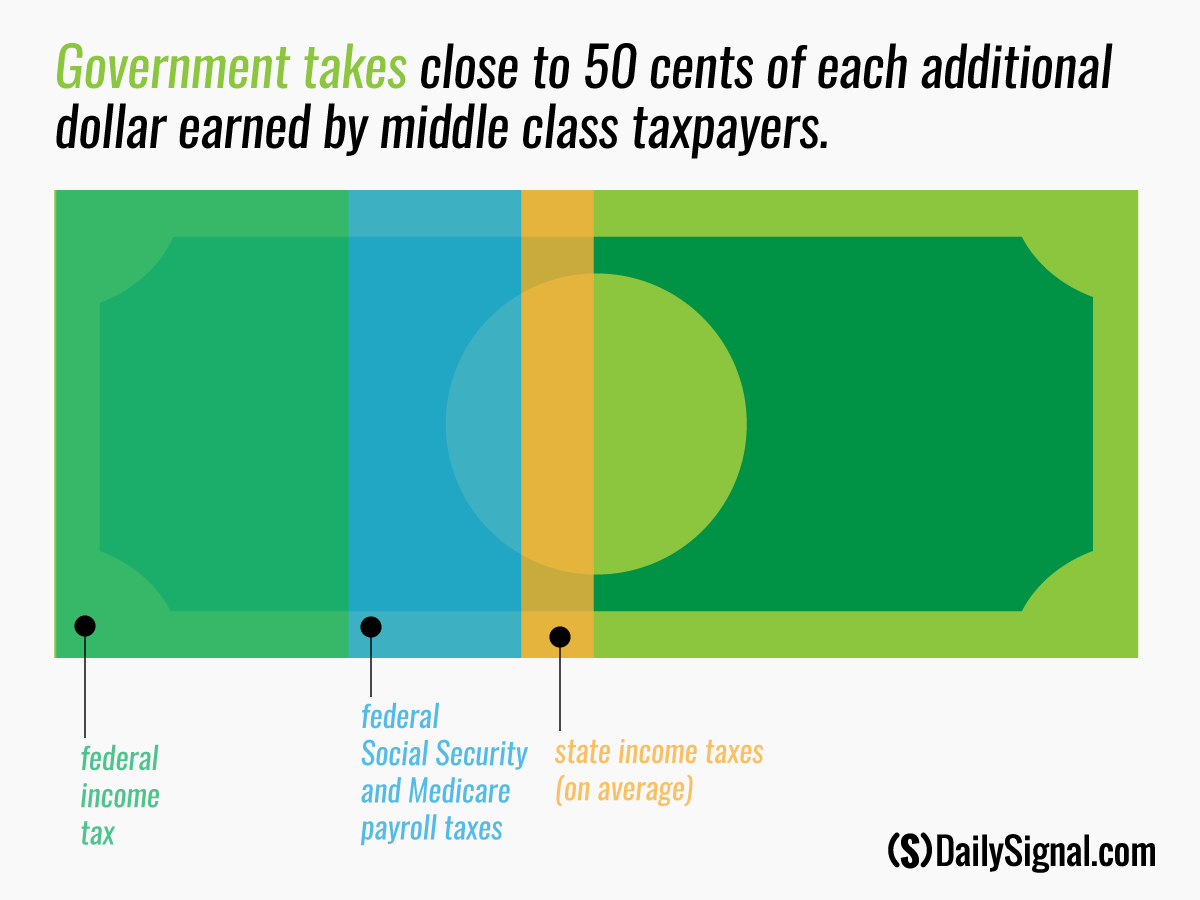How high is the marginal tax rate on each additional dollar the average American earns? In other words, if you got a raise of one dollar, how much of that dollar would be taxed away?
A middle-class taxpayer’s additional income (when a single person earns more than $37,450 a year) is subject to a 25 percent federal income tax. Then there are the federal Social Security and Medicare payroll taxes totaling 15.3 percent in 2015.
And then there are state taxes.
State income taxes for single individuals on the next dollar of their annual earnings over the $37,450 threshold in 2015 range from none in Alaska, Florida, Nevada, South Dakota, Texas, Washington and Wyoming to as high as 7.05 percent in Minnesota, 7.4 percent in Idaho, 7.9 percent in Hawaii, 7.95 percent in Maine and 9 percent in Oregon.
Put that all together and you have marginal tax rates on the middle class approaching 50 cents on the dollar.
High marginal tax rates are a disincentive to work and be productive. If middle class taxpayers received the full fruits of their labor, more of them could afford to start a business or send someone to college—both decisions that would lead to a more dynamic economy.
Do taxpayers get benefits from government spending? Sure. But there are far too many cases of tax dollars frittered away on corporate welfare for companies that end up going bankrupt, or wasted on federal programs that fail to accomplish their goals.
The answer to our oversized and incomprehensible tax system is a complete overhaul to make it simpler, fairer and more rewarding of hard work.
At this time of year especially, that would be welcome.
































